China Merchants Port Group Bundle
Who Really Controls China Merchants Port Group?
Understanding who owns a company is fundamental to grasping its strategic direction and potential. China Merchants Port Group (CMPort), a global port operator, presents a fascinating case study in the interplay of state ownership and market dynamics. From its inception as part of China Merchants Group, CMPort's ownership structure has evolved, shaping its growth and influence in the international trade landscape.
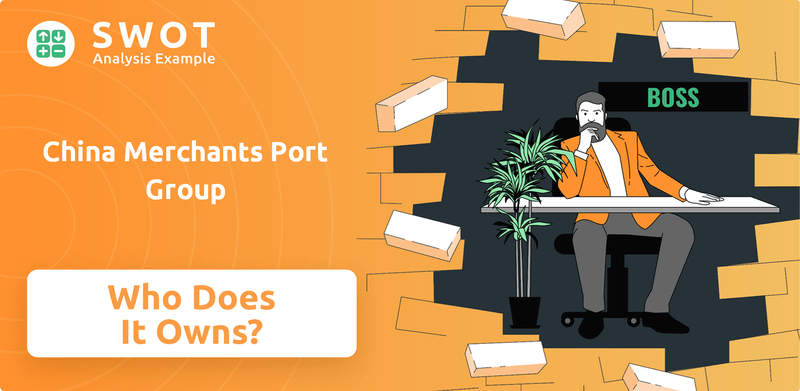
As a leading port operator, CMPort's ownership structure is a critical factor influencing its investment decisions and competitive strategies. Examining the evolution of China Merchants Port Group SWOT Analysis can provide valuable insights into its strengths, weaknesses, opportunities, and threats. This analysis will explore the shifts in major shareholdings, including the influence of institutional investors and public shareholders, offering a comprehensive CMPort company profile.
Who Founded China Merchants Port Group?
The ownership structure of China Merchants Port Group (CMPort) differs significantly from that of a typical private company. As a subsidiary of China Merchants Group (CMG), a Chinese state-owned enterprise, CMPort's origins are rooted in government control and strategic objectives. This structure influences its operations, financial strategies, and overall corporate governance.
The initial ownership of CMPort, when it was established as China Merchants Holdings (International) Company Limited in 1992 and subsequently listed on the Hong Kong Stock Exchange, was primarily held by CMG. This arrangement ensured that the port operator's activities aligned with the broader economic goals of the Chinese government. The early capital for CMPort's development came from CMG and public offerings, which allowed for expansion while maintaining CMG's controlling stake.
Therefore, the concept of individual founders with specific equity splits does not directly apply to CMPort. Instead, its founding ownership is defined by its establishment as a strategic subsidiary of CMG. This structure reflects the nature of CMPort as a key asset within a larger state-owned enterprise ecosystem, designed to efficiently manage and expand CMG's port assets while accessing public capital markets.
CMPort's ownership structure is primarily defined by its relationship with its parent company, China Merchants Group (CMG), a Chinese state-owned enterprise. CMG, under the supervision of the State-owned Assets Supervision and Administration Commission (SASAC), holds a significant stake in CMPort, ensuring strategic alignment with national economic objectives. This structure influences CMPort's operations and financial strategies.
- CMG's Role: CMG's ownership ensures that CMPort's port operations support broader national economic strategies.
- Public Listing: CMPort's listing on the Hong Kong Stock Exchange provides access to public capital, facilitating expansion and investment. CMPort's stock information is available through the Hong Kong Stock Exchange.
- State Control: The influence of SASAC through CMG ensures that CMPort's activities are in line with government policies.
- Strategic Objectives: CMPort's operations are geared towards enhancing China's trade capabilities and global port network. CMPort's business model is focused on port operations and related services.
China Merchants Port Group SWOT Analysis
- Complete SWOT Breakdown
- Fully Customizable
- Editable in Excel & Word
- Professional Formatting
- Investor-Ready Format
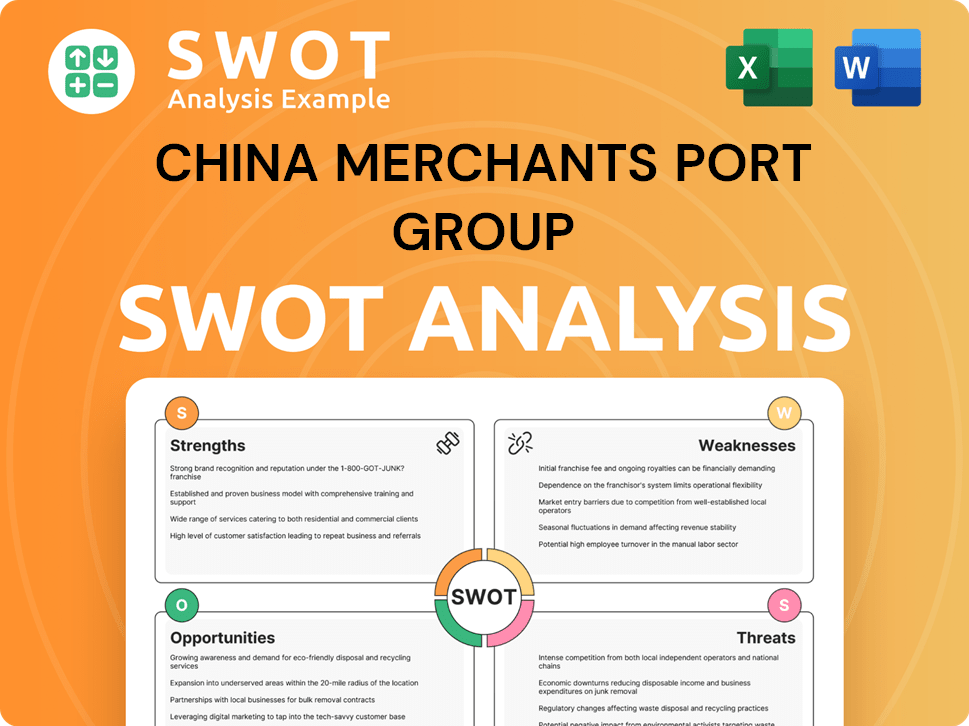
How Has China Merchants Port Group’s Ownership Changed Over Time?
The ownership structure of China Merchants Port Group (CMPort) has evolved significantly, primarily influenced by its relationship with China Merchants Group (CMG) and its public listing. The initial public offering (IPO) in 1992 was a pivotal moment, introducing public shareholders and facilitating capital growth while CMG maintained a controlling stake. As of early 2024, CMG remains the ultimate controlling shareholder, exerting its influence through direct and indirect holdings. This backing by a significant state-owned enterprise (SOE) provides stability and aligns CMPort with national economic strategies, including the Belt and Road Initiative.
The IPO in 1992 was a key event, transforming CMPort from a wholly CMG-owned entity to a publicly listed company. This move allowed CMPort to access external capital for expansion and growth. CMG's continued control ensures strategic alignment with national economic objectives. The company's shares are traded publicly, attracting a diverse range of institutional and individual investors. The ownership structure reflects a balance between state control and public market participation.
| Event | Impact on Ownership | Date |
|---|---|---|
| Initial Public Offering (IPO) | Introduced public shareholders, allowing external capital infusion. | 1992 |
| Ongoing Operations | CMG maintains controlling interest; public shareholders hold the remaining shares. | Ongoing |
| Strategic Investments and Expansions | Aligned with national economic strategy, influenced by CMG's control. | Ongoing |
Beyond CMG's controlling stake, CMPort's shares are publicly traded, attracting institutional investors. Major institutional investors, including asset management firms and sovereign wealth funds, hold significant portions of the company's shares. While specific percentages fluctuate, institutional ownership constitutes a substantial portion of the free float, indicating confidence in the company's long-term prospects. For detailed breakdowns of shareholding structures, including top institutional investors, refer to the company's annual reports and SEC filings. The continued strong ownership by CMG ensures strategic decisions align with broader national economic strategies. CMPort's commitment to sustainable practices and responsible corporate governance further enhances its appeal to investors. The company's strategic focus on port operations worldwide, coupled with its financial performance, makes it a key player in the global trade landscape.
Understanding CMPort's ownership structure is crucial for investors and stakeholders. CMG's controlling stake and public listing have shaped the company's evolution. Institutional investors play a significant role in the company's market valuation.
- CMG remains the ultimate controlling shareholder.
- Publicly traded shares attract institutional and individual investors.
- Strategic decisions align with national economic objectives.
- Annual reports provide detailed shareholding breakdowns.
China Merchants Port Group PESTLE Analysis
- Covers All 6 PESTLE Categories
- No Research Needed – Save Hours of Work
- Built by Experts, Trusted by Consultants
- Instant Download, Ready to Use
- 100% Editable, Fully Customizable
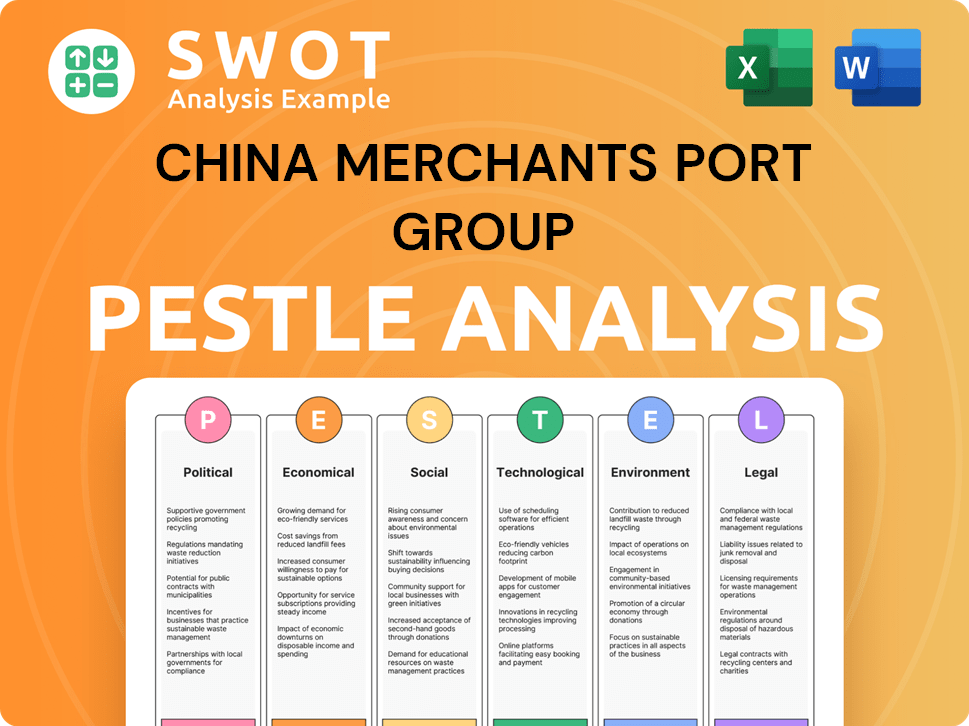
Who Sits on China Merchants Port Group’s Board?
The Board of Directors of China Merchants Port Group (CMPort) is central to the company's governance, reflecting the significant influence of its major shareholder, China Merchants Group (CMG). The board typically includes executive directors, who are senior management within the company, and non-executive directors, often representing CMG's interests. Independent non-executive directors provide external oversight, contributing to the board's objectivity. The composition of the board and the distribution of responsibilities are detailed in CMPort's annual reports, offering insight into the governance framework.
As of late 2024 and early 2025, the board members' positions often reflect their connection to CMG, ensuring alignment with the parent company's strategic vision. The voting structure generally follows a one-share-one-vote principle for its publicly traded shares, common for Hong Kong-listed companies. However, CMG's majority ownership inherently grants it dominant voting power, allowing it to approve major resolutions and shape the company's long-term strategy. For more details, you can read about the Growth Strategy of China Merchants Port Group.
| Director | Title | Affiliation |
|---|---|---|
| Li Jianhong | Chairman | China Merchants Group |
| Wang Hong | Vice Chairman & CEO | China Merchants Port Group |
| Zhu Jianhui | Executive Director | China Merchants Port Group |
CMG's substantial ownership ensures its dominant influence. This control allows CMG to appoint key executives and steer the company's strategic direction. While proxy battles are less common due to the state-backed majority ownership, independent non-executive directors play a crucial role in upholding corporate governance standards and protecting minority shareholder interests. The board's structure and voting dynamics are key aspects of understanding CMPort's operational and strategic decision-making processes.
CMPort's board is structured to reflect CMG's significant ownership, ensuring strategic alignment. The voting structure is primarily one-share-one-vote, but CMG's majority stake gives it considerable influence.
- CMG's influence is evident in board appointments and strategic decisions.
- Independent directors ensure governance and protect minority shareholder interests.
- Understanding the board's composition is crucial for assessing CMPort's strategic direction.
- CMPort is a major port operator.
China Merchants Port Group Business Model Canvas
- Complete 9-Block Business Model Canvas
- Effortlessly Communicate Your Business Strategy
- Investor-Ready BMC Format
- 100% Editable and Customizable
- Clear and Structured Layout
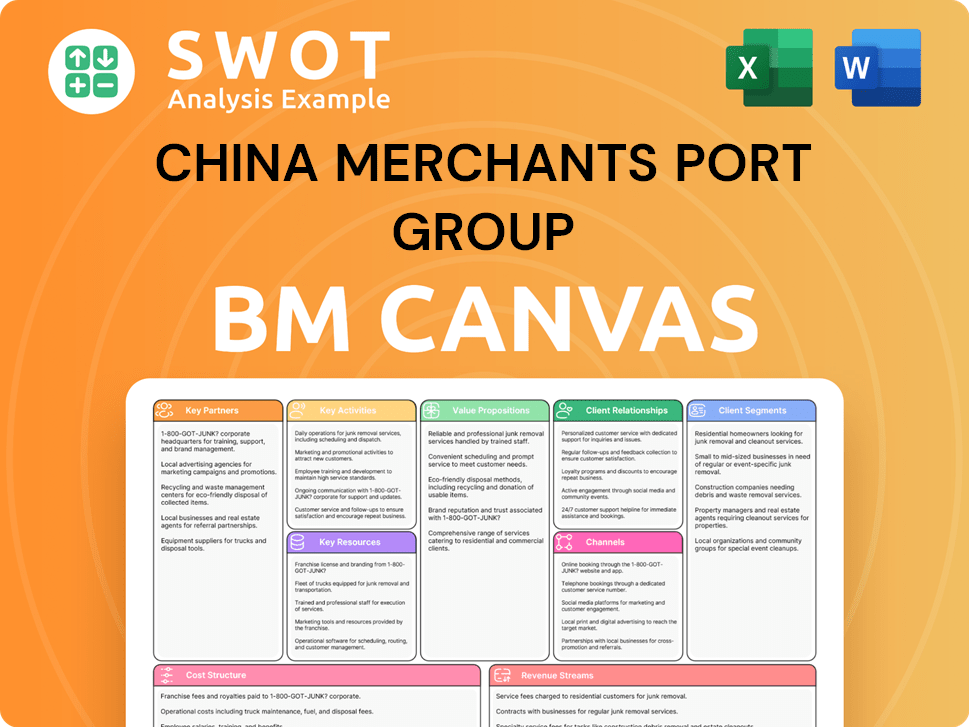
What Recent Changes Have Shaped China Merchants Port Group’s Ownership Landscape?
Over the past three to five years (2022-2025), China Merchants Port Group (CMPort) has maintained its position as a leading global port operator. The ownership structure has remained largely stable, with its parent company, China Merchants Group (CMG), retaining significant control. CMPort has strategically expanded its global presence, investing in port projects aligned with China's Belt and Road Initiative. These investments, while not drastically changing the parent company's stake, influence CMPort's valuation and appeal to investors.
Industry trends reveal increased institutional ownership in port operations worldwide. Large institutional investors and sovereign wealth funds remain key holders of CMPort's publicly traded shares, seeking exposure to global trade and infrastructure. There have been no major share buybacks or secondary offerings that would drastically alter the ownership structure in recent years. CMPort continues to engage in strategic partnerships and acquisitions, strengthening its network and market share. Public statements from the company and analysts highlight its strategic alignment with CMG's long-term goals, emphasizing continued investment in port infrastructure and logistics to support global trade flows.
As of late 2024, CMPort's financial performance reflects its strong market position. For instance, in 2023, CMPort reported a throughput of over 140 million TEUs (Twenty-foot Equivalent Units) across its global port network, demonstrating its significant role in international trade. CMPort's revenue in 2023 was approximately $10 billion USD, reflecting its robust operational performance and strategic investments.
| Metric | Value (2023) | Notes |
|---|---|---|
| Throughput (TEUs) | Approximately 140 million | Across global port network |
| Revenue (USD) | Approximately $10 billion | Reflects strong operational performance |
| Institutional Ownership | Significant | Includes large investors and sovereign wealth funds |
The ownership structure of CMPort is largely stable, with CMG as the primary shareholder. Strategic investments in overseas ports have continued, aligning with the Belt and Road Initiative. Institutional investors are significant holders of publicly traded shares.
CMPort's financial performance in 2023 showed robust growth. Revenue reached approximately $10 billion USD. Throughput across its global network exceeded 140 million TEUs, demonstrating its significant role in global trade.
CMPort's ownership reflects its status as a Chinese state-owned enterprise. The parent company, CMG, maintains significant control. Institutional investors hold a substantial portion of the company's shares.
CMPort's strategic direction aligns with CMG's long-term goals. This involves continued investment in port infrastructure and logistics. The company focuses on supporting global trade flows.
China Merchants Port Group Porter's Five Forces Analysis
- Covers All 5 Competitive Forces in Detail
- Structured for Consultants, Students, and Founders
- 100% Editable in Microsoft Word & Excel
- Instant Digital Download – Use Immediately
- Compatible with Mac & PC – Fully Unlocked
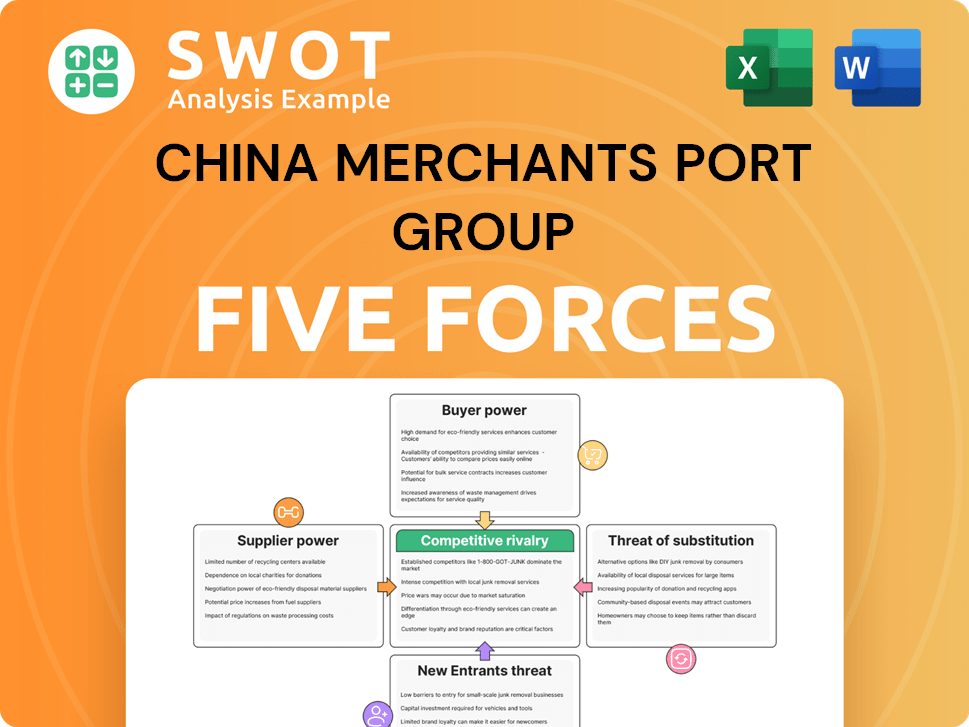
Related Blogs
- What are Mission Vision & Core Values of China Merchants Port Group Company?
- What is Competitive Landscape of China Merchants Port Group Company?
- What is Growth Strategy and Future Prospects of China Merchants Port Group Company?
- How Does China Merchants Port Group Company Work?
- What is Sales and Marketing Strategy of China Merchants Port Group Company?
- What is Brief History of China Merchants Port Group Company?
- What is Customer Demographics and Target Market of China Merchants Port Group Company?
Disclaimer
All information, articles, and product details provided on this website are for general informational and educational purposes only. We do not claim any ownership over, nor do we intend to infringe upon, any trademarks, copyrights, logos, brand names, or other intellectual property mentioned or depicted on this site. Such intellectual property remains the property of its respective owners, and any references here are made solely for identification or informational purposes, without implying any affiliation, endorsement, or partnership.
We make no representations or warranties, express or implied, regarding the accuracy, completeness, or suitability of any content or products presented. Nothing on this website should be construed as legal, tax, investment, financial, medical, or other professional advice. In addition, no part of this site—including articles or product references—constitutes a solicitation, recommendation, endorsement, advertisement, or offer to buy or sell any securities, franchises, or other financial instruments, particularly in jurisdictions where such activity would be unlawful.
All content is of a general nature and may not address the specific circumstances of any individual or entity. It is not a substitute for professional advice or services. Any actions you take based on the information provided here are strictly at your own risk. You accept full responsibility for any decisions or outcomes arising from your use of this website and agree to release us from any liability in connection with your use of, or reliance upon, the content or products found herein.